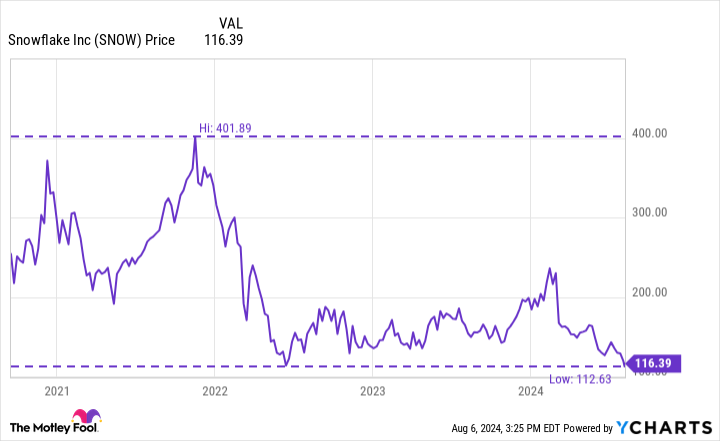Table of Contents
One of the biggest storylines in the capital markets is turning right now Apple. More specifically: Warren Buffett’s Berkshire Hathaway According to recent filings, the company has sold a significant portion of its stake in the iPhone maker.
While this has raised many eyebrows within the investment community, I personally wasn’t surprised. Plus, I don’t think Buffett is done yet.
Let’s delve into Buffett’s recent portfolio management and explore what the Oracle of Omaha might do next.
Buffett continues to reduce his stake in Apple
According to Berkshire’s most recent quarterly report, the company’s stake in Apple was $84.2 billion at the end of the second quarter. By comparison, Buffett’s stake in Apple was worth about $135 billion at the end of the first quarter.
While Apple remains a prominent pillar of Berkshire’s portfolio, it’s interesting to see Buffett reduce his stake by such a significant amount. That said, there were some indications that this was coming.
Earlier this year Berkshire cut its Apple position by about 13%. Buffett explained his rationale for the move at Berkshire’s annual shareholder meeting, saying he believed changes to the tax code were on the horizon. Essentially, Buffett wanted to rake in some profits and avoid a higher tax liability if his prediction came true.
While it is impossible to predict the perfect moment for it sell a shareBuffett’s logic makes perfect sense. Now that it’s been revealed that he’s cut his stake in Apple even further, I think there’s a good chance the famed investor will make another move that will also revolve around smart tax planning.


It may not be ready yet
Buffett’s portfolio is filled with blue chip, steady growth companies such as Coca-cola And American Express. Berkshire rarely invests in high-growth opportunities outside its core industry positions.
A few years ago, however, Berkshire made one of its most intriguing moves in recent history.
In 2020, Berkshire invested approximately $730 million in the Snowflake (NYSE: SNOW) initial public offering (IPO). Snowflake is a software-as-a-service (SaaS) company that specializes in big data analytics. Not only is Snowflake in the technology sector, which Buffett typically ignores, but at the time of its IPO the company was still burning cash. One of Buffett’s main investment philosophies is to invest in companies that generate stable and growing cash flow.
According to the documents, Berkshire owns approximately 6.1 million shares of Snowflake. Given the total investment of $730 million, investors can assume that Berkshire’s cost basis in Snowflake stock is around $120.
According to the chart above, it’s clear that Buffett missed some significant gains on Snowflake stock a few years ago. Furthermore, Berkshire is now facing a loss in its position, with shares trading around $116 per share today.
If the chart above is any indication, Snowflake’s price action is quite volatile. While there is a chance the stock could rebound significantly, the above trends indicate that investors have been heavily selling Snowflake stock for some time, especially in 2024.
While Buffett’s loss in his Snowflake position is not that big overall, I still think there is a good chance he will exit the position.
Some things to consider
I can’t say for sure why Buffett sold more Apple shares. My suspicion is that he wants to stockpile more cash due to a variety of factors, including market uncertainty related to the upcoming presidential election, further hedging related to potential tax law changes, and reducing his exposure to an ever-changing story about artificial intelligence (AI).
All these concerns could also impact stocks like Snowflake. Keep in mind that earlier this year, Snowflake’s CEO suddenly left, leaving investors stunned. Furthermore, unlike many of its SaaS peers, Snowflake has made little progress in AI. This dynamic has left many investors unenthusiastic and doubtful about the company’s future – hence the continued selling activity throughout the year.
Since Buffett has already made some splashy changes to his portfolio for tax reasons, I think it might make sense for him to sell his Snowflake shares and reduce his capital gains taxes through a strategy known as tax-loss harvesting.
Plus, I wonder if Buffett has fully bought into the AI story, since he’s not known as a big tech investor. My suspicion is that he isn’t and that it probably makes sense to move on from Snowflake and return to his roots.
Should You Invest $1,000 in Snowflake Now?
Before you buy shares in Snowflake, consider the following:
The Motley Fool stock advisor The analyst team has just identified what they think is the 10 best stocks for investors to buy now… and Snowflake wasn’t one of them. The ten stocks that made the cut could deliver monster returns in the coming years.
Think about when Nvidia created this list on April 15, 2005… if you had $1,000 invested at the time of our recommendation, you would have $641,864!*
Stock Advisor provides investors with an easy-to-follow blueprint for success, including portfolio building guidance, regular analyst updates, and two new stock picks per month. The Stock Advisor is on duty more than quadrupled the return of the S&P 500 since 2002*.
*Stock Advisor returns August 6, 2024
American Express is an advertising partner of The Ascent, a Motley Fool company. Adam Spatacco has positions at Apple. The Motley Fool holds and recommends positions in Apple, Berkshire Hathaway, and Snowflake. The Motley Fool has one disclosure policy.
Prediction: After Offloading Apple, This Will Be Warren Buffett’s Next Move With Artificial Intelligence (AI) Stocks was originally published by The Motley Fool

